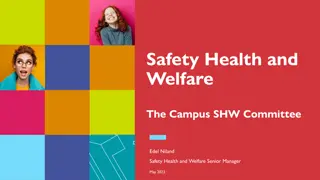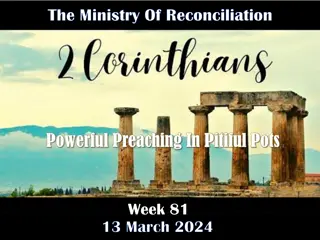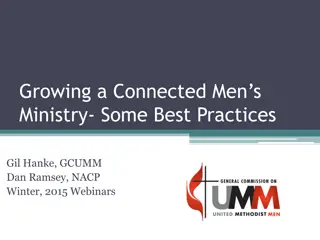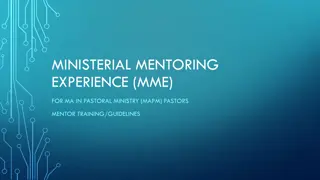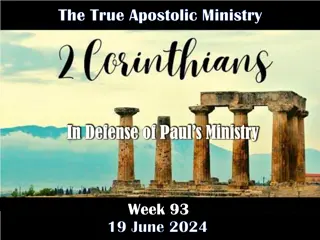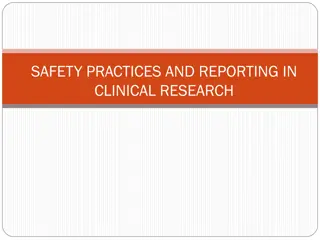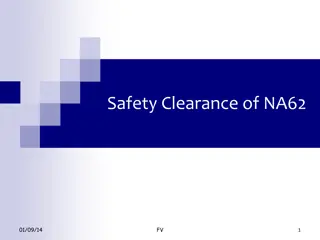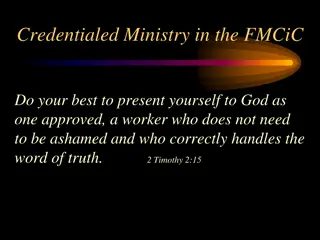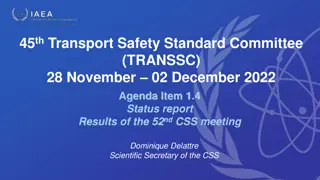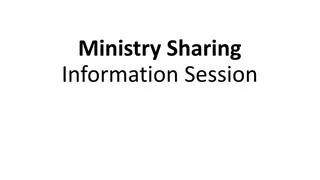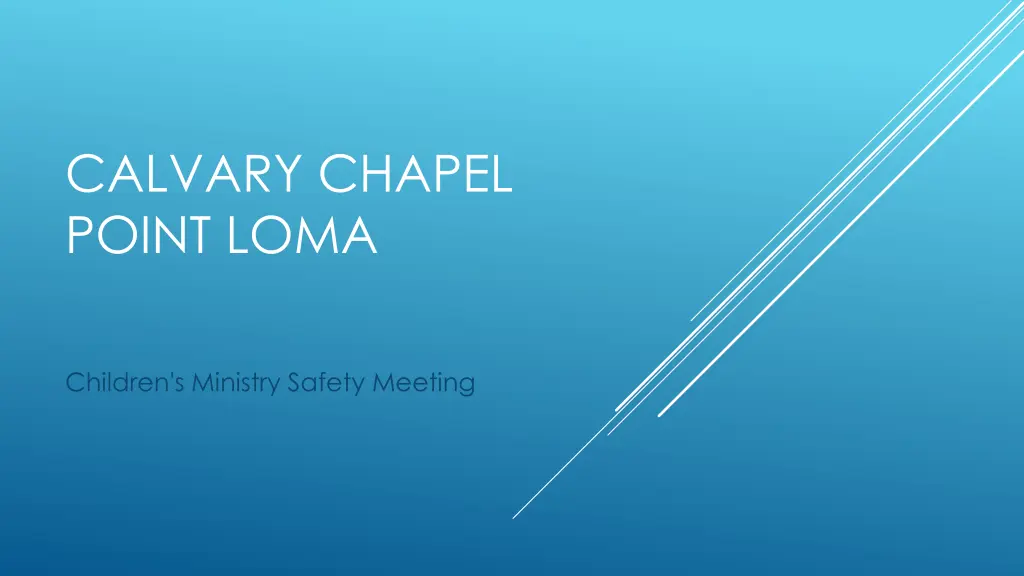
Understanding Child Protection Policies and Safety in Ministry
Explore the importance of child protective policies, scriptural basis, and types of abuse in ministry settings. Learn how to safeguard children and prevent abuse effectively.
Download Presentation

Please find below an Image/Link to download the presentation.
The content on the website is provided AS IS for your information and personal use only. It may not be sold, licensed, or shared on other websites without obtaining consent from the author. If you encounter any issues during the download, it is possible that the publisher has removed the file from their server.
You are allowed to download the files provided on this website for personal or commercial use, subject to the condition that they are used lawfully. All files are the property of their respective owners.
The content on the website is provided AS IS for your information and personal use only. It may not be sold, licensed, or shared on other websites without obtaining consent from the author.
E N D
Presentation Transcript
CALVARY CHAPEL POINT LOMA Children's Ministry Safety Meeting
Ministry Purpose or Goal That all children, youth and families throughout San Diego will come to know, love and serve the Lord Jesus
Why develop a Child Protective Policy? To establish proper preventative measures to protect individuals against child abuse allegations of any form. To establish proper preventative measures to ensure the safety of the children in our ministry care.
Scriptural Basis for Child Protective Policies Matthew 18:6 - But whoever causes one of these little ones who believe in me to sin, it would be better for him to have a great millstone fastened around his neck, and to be drowned in the depth of the sea. (Also Mark 9:4)
Scriptural Basis for Child Protective Policies Luke 17:1, 2 And He said to His disciples, Temptations to sin are sure to come, but woe to the one through whom they come! It would be better for Him if a millstone were hung around his neck and he was cast into the sea than that he should cause one of these little ones to sin .
Physical Abuse can be The actual striking of a child. The exposure of a child to unreasonable risk of harm or personal injury. The exposure of a child to harmful substances. The witnessing of acts of abuse.
Sexual Abuse can be Inappropriately touching a minor. Persuading a minor to engage in sexual activity. Allowing a minor to engage in sexual activity. Allowing a minor to witness sexual activity or to view pornography. Communicating in a sexual manner with a minor
Emotional and Psychological maltreatment is Actions or words that cause a child to believe he or she is bad, inferior, or unacceptable.
Neglect is the most common form of child abuse It is the failure to provide for a child s: - physical needs - medical needs - emotional needs - safety needs, including adequate supervision
Goals of Child Protection training To reduce the risk of harm to children. To provide a safe and secure environment for children and workers
Obligation to Report We have a duty to report child abuse. Romans 13:1 Let every person be subject to the governing authorities. For there is no authority except from God, and those that exist have been instituted by God. Guidance for Reporting can be found at: www.childwelfare.gov. After reporting suspected abuse, notify your immediate Children's Ministry Leader who will also inform the pastor at CCPL After reporting suspected abuse, you may be approached for an interview or for comments by the media or other sources. Don t comment other than referring them to the Pastor of CCPL.
The Problem of Negligent Volunteer Screening The trauma and abuse to the victim. The emotional and spiritual impact on the congregation. The negative news coverage. The stress of litigation and the investigative process. The financial cost. The personal impact on church leaders.
Reasons why screening should be taken seriously One of the greatest risks facing churches today is the problem of child abuse. Churches that have screened its workers will be in a better position to reduce their liability by showing that they acted with responsible care in staff selections(Paid and unpaid). Effective screening can: - identify individuals with criminal backgrounds. - validate an applicant's qualifications - provide information on an applicant's character, reliability, knowledge, skills and overall suitability for a specific area of ministry.
Standards of Conduct Always require a child to be signed in and out of ministry programs by a parent or authorized adult(keep a security list identifying authorized pick-ups with the sign- in sheet). Maintain a two-worker rule. Always have an adult worker present with teenage volunteers. Have volunteer workers wear name badges. Always use appropriate verbal communication. Do not allow lap sitting in classes or during activities, etc. Always document accidents with an accident report and keep a copy.
Standards of Conduct Arrive at your designated ministry area at least 15 minutes before the start of the ministry or activity. Remain in your designated ministry area 15 minutes after the end of the activity or until all youth have left.
Open Door Policy Weather permitting, the classroom doors should remain open. When the doors need to be closed, the blinds or the curtains to the room must be open allowing an unobstructed view into the room. Both policies allow anyone passing by to see what is going on in the classrooms. Parents of the children being served in the ministries of this church have the right to visit and observe any ministry or activity without advance notice.
Restroom Policies Before, during and after activities that are youth specific, the class restrooms are off limits to adults and ministry volunteers. Volunteers are to use the restrooms in the hallway connected to the main sanctuary or the restrooms in the gymnasium. Procedures: Volunteers may walk the children to the entrance of the restroom. Volunteers are to remain in the hallway outside of the restroom. If the child needs assistance and can respond to verbal commands, give them verbal instruction from the doorway of the restroom.
Restroom Policies, cont. If a child needs assistance and cannot respond to verbal instruction, two volunteers over the age of 18 need to be present to physically assist the child the restroom. If parents are not approved as volunteers by this ministry, then they may only assist with their OWN children in restroom situations. They should use the hallway restroom attached to the sanctuary or the restrooms in the gymnasium
Discipline No forms of physical punishment are to be used at any time by ministry leaders or volunteers. This includes all contact of any kind and time outs. No forms of verbal abuse, such as ridicule or coarse joking are to be used at any time. It is our policy to send for the parent of the child when there is a need for disciplinary action -so that the parent can administer the necessary correction or discipline that may be needed. Discipline, if ever used, should always be constructive, intended to train and instruct rather than punish. Discipline comes form the root word for disciple( to learn ).
Photography Usage Any photos taken of anyone at church, especially children, must be taken in good taste . Photographs are to be used for non-commercial reasons(i.e., you cannot sell photos). Any photographs taken for publication in Newsletters, Websites, Facebook, Social media of any kind, etc. must have written consent of each parent of each child in the picture. You must also have the consent of every adult in the picture. A photographic release at CCPL covers this policy and gives blanket permission.
Illness and Injury Illness or injuries, other than simple cuts and scrapes, should be documented in writing using the approved CCPL injury report. Ask the Children s Ministry leader for this document. 2 copies of the original report must be made: - one for the church - one for the ministry leader - originals are to be sent home with the parent(s) Injury reports MUST be completed for all head, neck, and back injuries or accidents- regardless of how minor they may appear.


